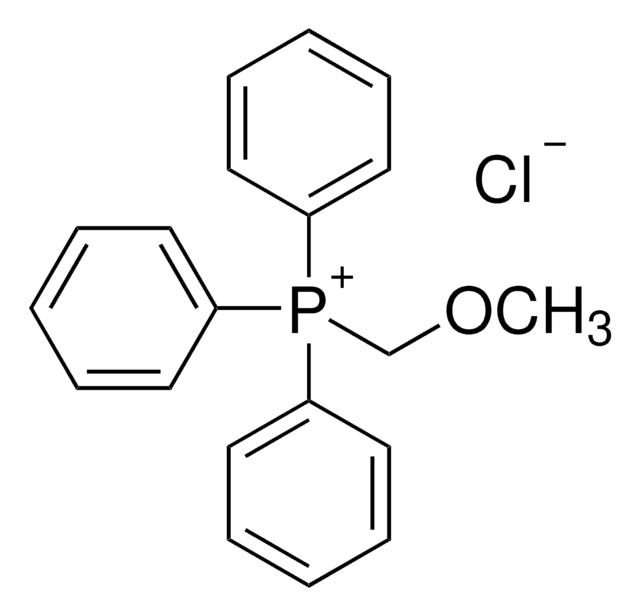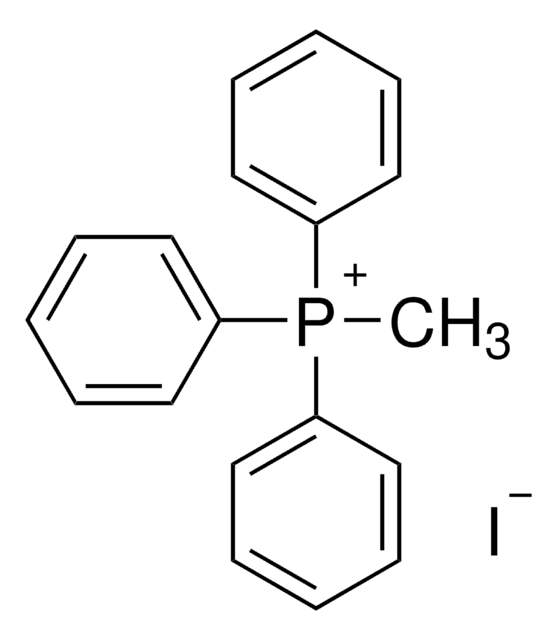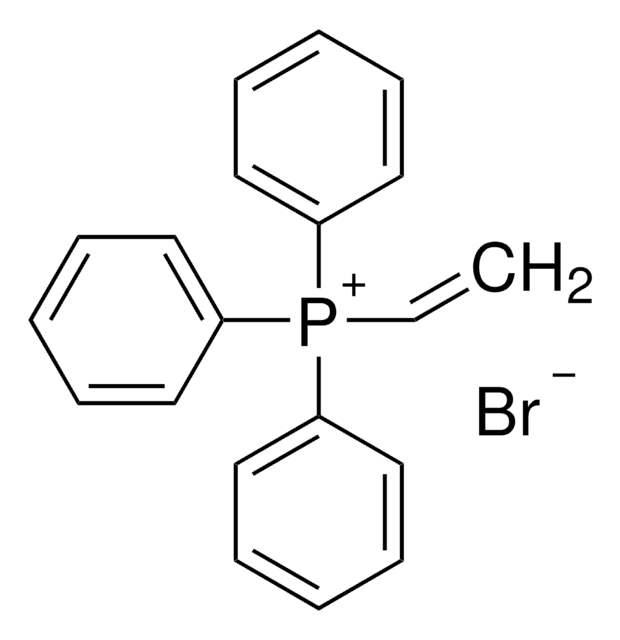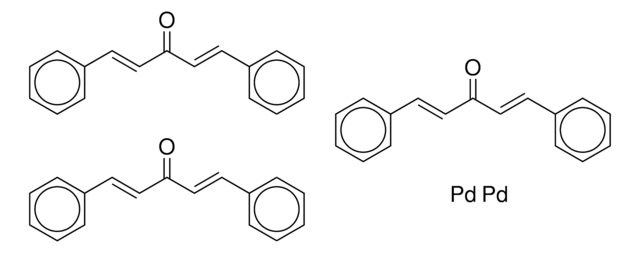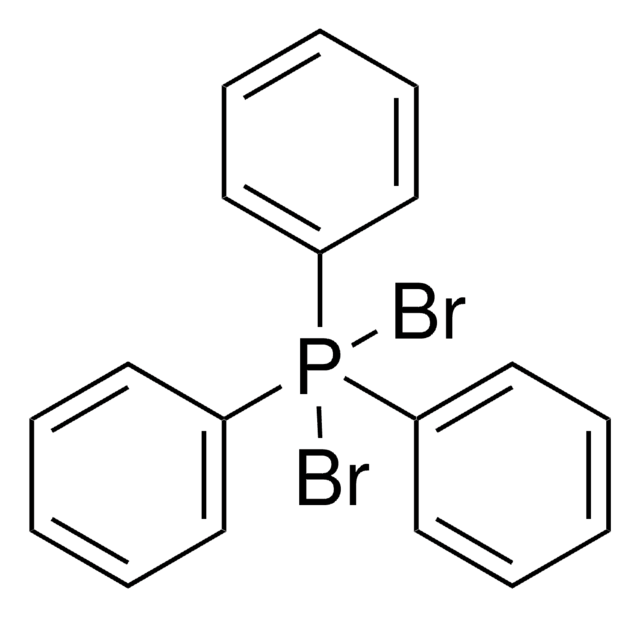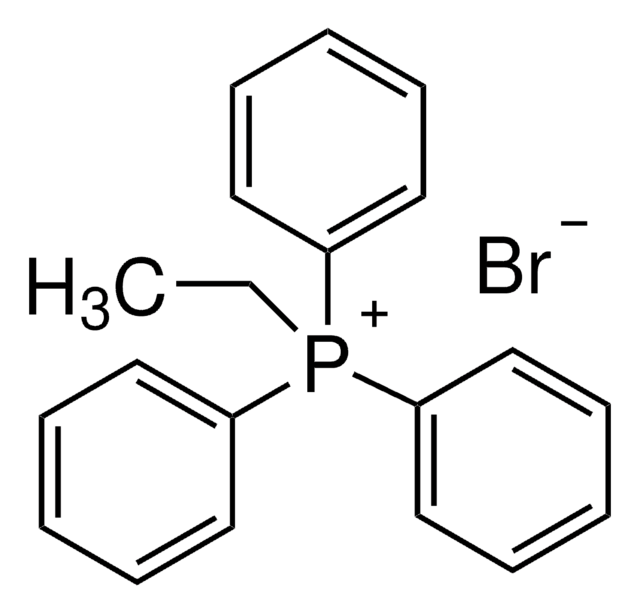130079
Methyltriphenylphosphonium bromide
98%
Sinónimos:
TPMP, Triphenylmethylphosphonium bromide, triphenylmethylphosphonium bromide
About This Item
Productos recomendados
Ensayo
98%
Formulario
powder
idoneidad de la reacción
reaction type: C-C Bond Formation
mp
230-234 °C (lit.)
grupo funcional
phosphine
cadena SMILES
[Br-].C[P+](c1ccccc1)(c2ccccc2)c3ccccc3
InChI
1S/C19H18P.BrH/c1-20(17-11-5-2-6-12-17,18-13-7-3-8-14-18)19-15-9-4-10-16-19;/h2-16H,1H3;1H/q+1;/p-1
Clave InChI
LSEFCHWGJNHZNT-UHFFFAOYSA-M
¿Está buscando productos similares? Visita Guía de comparación de productos
Aplicación
Palabra de señalización
Danger
Frases de peligro
Consejos de prudencia
Clasificaciones de peligro
Acute Tox. 3 Oral - Aquatic Chronic 2
Código de clase de almacenamiento
6.1D - Non-combustible acute toxic Cat.3 / toxic hazardous materials or hazardous materials causing chronic effects
Clase de riesgo para el agua (WGK)
WGK 3
Punto de inflamabilidad (°F)
>464.0 °F
Punto de inflamabilidad (°C)
> 240 °C
Equipo de protección personal
dust mask type N95 (US), Eyeshields, Gloves
Elija entre una de las versiones más recientes:
Certificados de análisis (COA)
¿No ve la versión correcta?
Si necesita una versión concreta, puede buscar un certificado específico por el número de lote.
¿Ya tiene este producto?
Encuentre la documentación para los productos que ha comprado recientemente en la Biblioteca de documentos.
Los clientes también vieron
Nuestro equipo de científicos tiene experiencia en todas las áreas de investigación: Ciencias de la vida, Ciencia de los materiales, Síntesis química, Cromatografía, Analítica y muchas otras.
Póngase en contacto con el Servicio técnico
